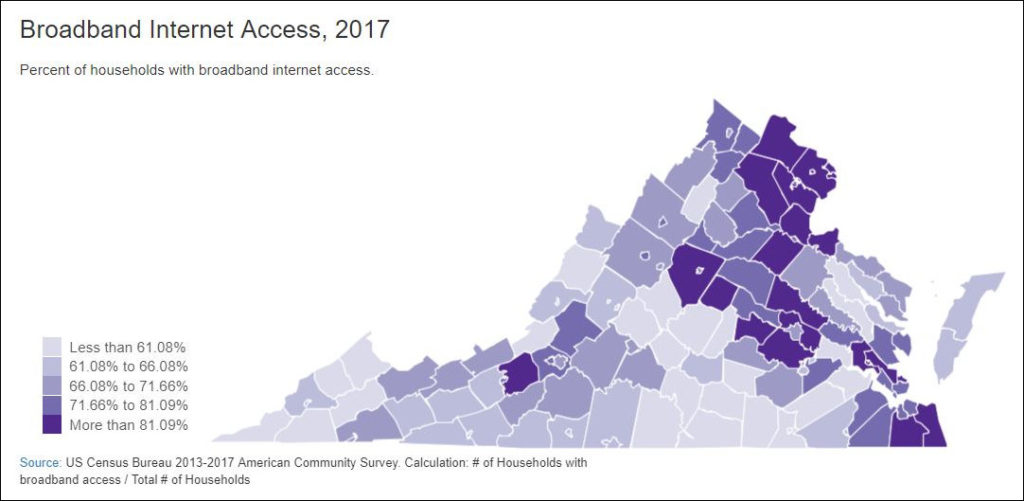
This map, published today by the Virginia Public Access Project, shows clearly the metropolitan/rural divide in access to broadband Internet access. Some rural areas obviously enjoy better broadband service than others. Look at the cluster of counties to the south and west of the Washington metropolitan area. Look at the cities and counties running down the I-81 corridor from Winchester to Blacksburg. Many are low-density localities, but somehow they have higher broadband penetration.
It would be interesting to know what sets them apart. Do they have more tightly clustered populations that can be served economically by broadband providers? Do they have activist local governments that subsidize local broadband initiatives? Are they one-off cases like Montgomery County, site of Virginia Tech, with a huge wired campus that skews the numbers? If Governor Ralph Northam gets the money for broadband he is asking for, I would hope that any state-led broadband initiative would take local peculiarities into account.

Leave a Reply
You must be logged in to post a comment.